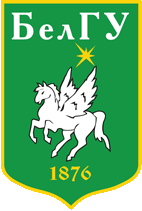Assessment of the severity of delayed changes in the state of the neuromuscular system during correction of local cold injury of III-IV degree with pCMV-VEGF165 plasmid preparation in an experiment
DOI:
https://doi.org/10.18413/rrpharmacology.11.550Abstract
Introduction: The relevance of the topic is due to a wide range of clinical manifestations of frostbite, including long-term complications such as neuropathy, chronic pain, and functional impairments. Tissue recovery after frostbite depends on the degree of microvascular damage, and VEGF (vascular endothelial growth factor) is considered a promising agent for stimulating angiogenesis and improving tissue trophism. The aim of the study was to study the effectiveness of the use of a genetic construct – pCMV-VEGF165 plasmid in the correction of delayed complications of cold injury in rats.
Materials and Methods: Local frostbite of III-IV degree was modeled in 18 rats using a neodymium magnet cooled in liquid nitrogen. On days 2 and 7 after the injury, pCMV-VEGF165 (60 µg) was administered to the wound edges. The control group received a placebo. The state of the neuromuscular system was assessed using electromyography on days 28 and 60.
Results and Discussion: In the control group, a significant decrease in the amplitude of the M-response (1.75 times, p=0.001) and an increase in the latency period by 10% (p=0.004) were observed, indicating axonal damage and myelinopathy. The decrement index of the M-response increased (2.2 times), suggesting impaired neuromuscular conduction. In the pCMV-VEGF165 group, the amplitude of the M-response, latency period, and decrement index did not differ significantly from those in the intact animal group.
Conclusion: pCMV-VEGF165 promotes a reduction in the degree of tissue damage and accelerates their regeneration by restoring blood flow, confirming its effectiveness in preventing delayed complications of cold injury.
Graphical Abstract

Keywords:
EMG, frostbite, myelinopathy, VEGFReferences
Aizawa T, Kuwabara M, Kubo S, Aoki S, Azuma R, Kiyosawa T (2019) Protective effect of extract of ginkgo biloba 761 against frostbite injury in rats. Plastic and Reconstructive Surgery 143(6): 1657–1664. https://doi.org/10.1097/PRS.0000000000005648 [PubMed]
Badalyan LO, Skvortsov IA (1986) Clinical Electroneurography: A Guide for Doctors. Medicine, Moscow, 386 pp.
Burleva EP, Babushkina YV (2016) Administration of Neovasculgen agent for treatment of a patient with neuroischaemic form of diabetic foot syndrome. Angiology and Vascular Surgery [Angiologiya i Sosudistaya Khirurgiya] 22(2): 47–51. [in Russian] [PubMed]
Frostbite. Hypothermia. Other effects of low temperature exposure. Clinical recommendations of the Ministry of Health of the Russian Federation (2024) Medical professional non-profit organization “All-Russian public organization Association of Combustiologists “World Without Burns””. URL: https://cr.minzdrav.gov.ru/preview-cr/678_2 (ID: 678_2) [in Russian]
Gorjanc J, Morrison SA, Blagus R, Mekjavic IB (2018) Cold susceptibility of digit stumps resulting from amputation after freezing cold injury in elite alpinists. High Altitude Medicine and Biology 19: 185–192. https://doi.org/10.1089/ham.2017.0134 [PubMed]
Handford C, Thomas O, Imray CHE (2017) Frostbite. Emergency Medicine Clinics of North America 35(2): 281–299. https://doi.org/10.1016/j.emc.2016.12.006 [PubMed]
Imray C, Grieve A, Dhillon S; Caudwell Xtreme Everest Research Group (2009) Cold damage to the extremities: frostbite and non-freezing cold injuries. Postgraduate Medical Journal 85(1007): 481–488. https://doi.org/10.1136/pgmj.2008.068635 [PubMed]
Ishchenko RV, Fistal EYA, Filimonov DA, Pokrovsky MV, Arkhipov BB, Naletov SV, Arefyev BB, Makiyenko BB, Naletova EN (2024) The use of the drug Neovasculgen off-label in the treatment of frostbite of the foot II–III degree: a clinical case. Safety and Risk of Pharmacotherapy [Bezopasnost i Risk Farmakoterapii] 12(4): 409–419. https://doi.org/10.30895/2312-7821-2024-429 [in Russian]
Kapustina E A, Rusanova D V (2007). Electroneuromyographic manifestations in experimental intoxication with vinyl chloride. Acta Biomedica Scientifica (6): 78–80. [in Russian]
McIntosh SE, Freer L, Grissom CK, Auerbach PS, Rodway GW, Cochran A, Giesbrecht GG, McDevitt M, Imray CH, Johnson EL, Pandey P, Dow J, Hackett PH (2019) Wilderness medical society clinical practice guidelines for the prevention and treatment of frostbite: 2019 Update. Wilderness and Environmental Medicine 30(4S): S19–S32. https://doi.org/10.1016/j.wem.2019.05.002 [PubMed]
Murphy JV, Banwell PE, Roberts AH, McGrouther DA (2000) Frostbite: pathogenesis and treatment. The Journal of Trauma 48(1). https://doi.org/10.1097/00005373-200001000-00036 [PubMed]
Pestov YaS (2020) Features of frostbite among soldiers of the Red Army during the Great Patriotic War of 1941-1945. Bulletin of the Northern State Medical University [Byulleten Severnogo Gosudarstvennogo Meditsinskogo Universiteta] 1(44): 10–12. [in Russian]
Regli IB, Strapazzon G, Falla M, Oberhammer R, Brugger H (2021) Long-Term sequelae of frostbite-a scoping review. International Journal f Environmental Research and Public Health 18(18): 9655. https://doi.org/10.3390/ijerph18189655 [PMC] [PubMed]
Shvalb P G, Gavrilenko A V, Kalinin RE, Chervyakov Yu V, Voronov DA, Staroverov INN, Gryaznov S V,Mzhavanadze N, Nersesyan E G, Kiselyov SL, Isaev AA, Deev RV (2011) Efficacy and safety of Neovasculgen in the complex therapy of patients with chronic lower limb ischemia (phase IIb-III clinical trials). Genes and Cells [Geny i Kletki] 6(3): 76–83. [in Russian]
Published
How to Cite
Issue
Section
License
Copyright (c) 2025 Darya A. Kostina, Olesya V. Shcheblykina, Anna A. Peresypkina, Vladimir V. Molchanov, Vladimir V. Arkhipov, Nina I. Zhernakova, Valeria S. Simokhina, Chao Zhu, Oleg S. Gudyrev

This work is licensed under a Creative Commons Attribution 4.0 International License.
 Русский
Русский
 English
English

